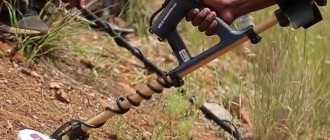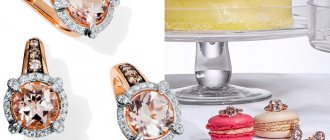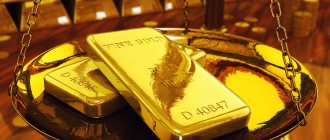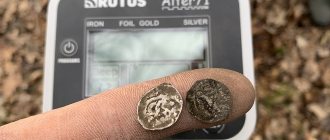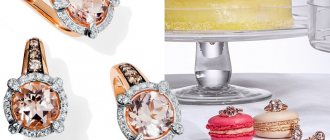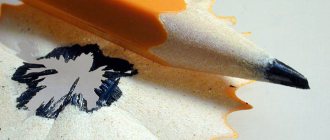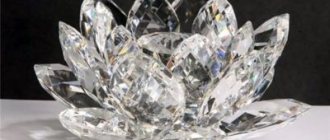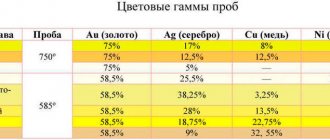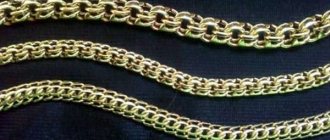Programs for jewelers
Although the creation of original jewelry is still very much a purely manual work of craftsmen, the ubiquitous technological progress has penetrated into this area. If earlier sketches of jewelry were drawn by hand, today three-dimensional models with detailed texture and detail are created on computers using specially developed software. This helps to significantly save manufacturing time and reduce the cost of products. In addition, making models using 3D printers or CNC machines minimizes the human factor and improves the quality of jewelry. Today, the following jewelry programs for jewelers are the most commonly used in this industry.
Rhinoceros. This 3D modeling program for jewelers is based on NURBS technology - creating three-dimensional images of jewelry from curved surfaces using B-splines. The functionality of this software also includes complex and non-photorealistic rendering of models, applying reflections and highlights to them. A Rhino user can install over 100 plugins to perform additional image processing. The program allows you to import and export models in more than 30 different formats. Thanks to this, the software package from Rhinoceros can interact with software from other manufacturers, which significantly expands the capabilities of the wizard.
Magics. The functionality of this modeling program for jewelers is designed not so much for creating, but rather for adjusting existing jewelry models. This software is used to prepare, edit and improve STL files in order to optimize them for subsequent printing on a 3D printer. Magics allows you to import models from most 3D modeling software from other manufacturers, including Rhino, SketchUp, SolidWorks and others. It provides the ability to change an already created model - for example, the user can combine shells, create object markings, extrude and align surfaces, perforate holes and other operations. Using this software, the developer can correct inverted triangles, distorted edges and other defects of the original model.
Keyshot. This software package is used in cases where it is necessary to create a photorealistic 3D model of jewelry. Its use allows you to overlay textures of various real materials, lighting effects, add environments (HDRi maps), and backgrounds onto an already developed model. The program has a friendly and intuitive interface, which is also accessible to those who are encountering such software for the first time. It is also worth mentioning the realtime rendering function present in it, thanks to which the result can be seen at the moment of applying a new parameter.
ZBrush. The distinctive feature of this 3D jewelry modeling program is to create a digital sculpture using real-time rendering of the model. In other words, this software allows you to “sculpt” a model with simultaneous and automatic application of texture and color, light and shadow. ZBrush also allows you to connect third-party plugins to work with geometry, brushes, etc.
Although software packages for jewelers significantly expand their capabilities and simplify the development of models of future products, an untrained person will not be able to use this software without special knowledge and skills. For this purpose, there is an educational course at the J-DESIGN.PRO school, in which novice jewelers are taught the basics of the craft, mastery of software, and tools. Classes include not only theoretical training, but also active learning in practice.
If you liked it, share it with your friends))
Main advantages
To create a 3-dimensional projection, the master takes little time; the presence of such solutions significantly simplifies the work processes associated with creating a wax model. The use of 3D modeling allows the customer:
- If desired, make adjustments to the model;
- Evaluate the product before production begins;
- Efficiency of production is guaranteed, the finished product will fully satisfy the individual wishes of the client.
In fact, modeling an object has numerous advantages that are valued among jewelry makers, the main ones being:
- The processes of calculating the required amount of material to make a specific product are simplified;
- Based on the image already obtained, the master can develop several more subtypes of products, varying the materials;
- Allows you to evaluate the attractiveness and potential of a product, in the creation of which ready-made sketches were used;
- Within the framework of modeling, changes can be made repeatedly until the result is completely satisfactory;
Creating a three-dimensional model will be important not only for the master, but also for the customer. The thing is that the use of advanced technologies allows the client to save money and his own time on placing an order, and the master will not need to spend a lot of effort on implementing each stage separately. The most important thing with this approach to production is that the high quality and maximum precision of custom-made jewelry is guaranteed.
Making jewelry tags. Circulation from 500 pcs.
The cost of making tags depends on:
- number of colors;
- size;
- printing method;
- circulation.
What types of tags are there? How to choose tags?
More recent examples of jewelry tags on our Instagram @uvelir_birki
Precision and quality
The positioning accuracy of the cutter in CNC machines reaches 0.001 mm, which is higher than that of a 3D printer. The quality of surface processing by a milling cutter also depends on the size of the cutter itself, and the radius of the tip of the cutter is at least 0.05 mm, but the movement of the cutter is programmed, usually a step of a third or half of the cutter, respectively - all transitions are smoothed out.
Photo by @freemanwax
The layer thickness when printing on the Form 2, the most popular but far from the most accurate printer, and therefore the vertical accuracy, is 0.025 mm, which is half the diameter of the tip of any cutter. Its beam diameter is 0.14 mm, which reduces resolution but also produces a smoother surface.
Photo @landofnaud
In general, the quality of the resulting products on a photopolymer printer and top-end milling machines is comparable. In some cases, on simple forms, the quality of the milled part will be higher. With the complexity of shapes, the story is different - a 3D printer is capable of printing something that no milling cutter could ever cut, due to design limitations.
Jewelry production using 3D models
The model is sent for production after it has been fully agreed with the customer. A polymer or wax model is created. After this, the completed mold is put into plaster and placed in an oven. The molten metal chosen for making the jewelry is poured into the back of the resulting mold. The final stage is processing, polishing, and, if provided for by the project, inlaying.
Today you can order a product from a catalog where ready-made options are offered in assortment. If there is a desire to receive a unique product, specialists, taking into account your wishes, will make a sketch, as well as a three-dimensional projection of the jewelry of interest, which will be completed promptly and taking into account the requirements. In conclusion, we note that 3D modeling allows you to create incredible beauty and unique jewelry of any complexity, taking into account the wishes and requirements of clients.
Order a service
Basics and principles of modeling
It is impossible to talk even superficially about 3D modeling and design: there is too much information to cover, including the placement of drawings, adding planes, and dividing future 3D scenes into geometric objects and parts.
And the trial and error method in the case of Rhino 3D will not save you: quite the opposite - it will only make you doubt each of your actions and give up getting acquainted with the world of industrial and entertainment design. Therefore, every beginner is recommended to step-by-step understand a set of training materials published on the Render website under the title “Fundamentals and principles of modeling.”
Is “2A: Jewelry Trade Management” suitable for your company?
To answer this question, it is best to call us and get comprehensive expert advice. You can also order a FREE demonstration in your office.
We would also like to note the following hierarchy of development and implementation of specialized software:
- platform "1C:Enterprise 8.1" . All solutions of 1C: Trade Management), as well as its partners, are built on the 1C: Enterprise 8.1 platform. Read about the advantages of this platform on the 1C website.
- standard solutions, “1C: Accounting 8”, etc.
- industry solutions . For example, “2A: Jewelry Trade Management”, built on the basis of “1C: Trade Management”.
- modifications for a specific enterprise . Creation of external reports and processing. If necessary, modification of the standard 1C configuration. At the same time, all modifications by our specialists are made in such a way that in subsequent use it is possible to update standard 1C solutions with minimal effort.
Thus, you receive a supported, updated product that has all the power of the 1C:Enterprise 8.1 platform and standard solutions, 1C: Trade Management, etc.), and at the same time is maximally tailored to the accounting features of your enterprise.
How does this happen
The printed models are soldered to a wax barrel, then the resulting structure is filled with plaster or a special solution, after hardening of which the finished form is heated in an oven and then filled with metal.
The wax material burns out without a trace, allowing the metal to take up all the free space and exactly repeat the shape of the workpiece.
More details:
1. The casting process begins with printing the model and standard post-printing processing - the printed part is separated from the supports, washed, subjected to curing exposure in ultraviolet light, and, if necessary, lightly polished.
2. Next, the process is similar to that used for casting using conventional waxes. The blanks are soldered to a wax sprue, which will hold them in the correct position and create a channel for metal distribution.
If the quantity and size of the products allow, you can skip this step - if you print the products together with the sprue as a single unit.
3. The sprue is fixed in the injection flask. If the flask is perforated, the holes should be closed, for example, with packing tape.
4. The filling solution is mixed in the proportions specified class=”aligncenter” width=”1000″ height=”513″[/img] Then it is poured into the flask with the sprue inside. Pour carefully so as not to damage the model or dislodge the tree.
5. The flask is placed in a vacuum chamber for at least 90 seconds so that all the air comes out of the solution. Then it is transferred to a place protected from vibration to allow it to harden as quickly as possible.
6. Molded containers are placed in an oven, cold or heated to 167ºC, and the temperature is gradually raised until the plastic of the models is completely burned out.
Preheat - preheating.
Insert flask - place the flask in the oven. Ramp — raise (change) the temperature. Hold - hold the temperature (example: 3h = 3 hours) 7. Upon completion of this process, metal is poured into the mold.
8. After filling, the mold is cooled and the filling material is washed out.
9. All that remains is to remove the finished products, separate them and lightly polish them.
Photos of products created by Top3DShop:
Economical
Photopolymers used in stereolithography printers are more expensive than regular jewelry wax.
Large pieces of wax after the milling machine can be melted into new blanks, although this is also time-consuming and unnecessary steps, but it also saves money. Milled wax is cheaper in terms of the cost of each individual product of the same volume. Wax is not the only consumable material in the work of a router; the cutters also gradually wear down and require replacement; they last for 1-2 months of intensive work, but this does not significantly reduce the gap.
The work of a milling cutter, in terms of the cost of manufactured products, is cheaper.
Photo @3DHub.gr
Conclusions:
Both technologies have their pros and cons.
If the jewelry workshop already has a CNC milling machine, then it will cope with most of the tasks of producing single pieces. Moreover, if only single copies are made and not very often, then the machine wins in speed. If the goal is not to develop production, increase the volume of work, turnover of funds, or raise the level of complexity of products, then a 3D printer will only be an additional financial burden.
With an increase in the pace and volume of work, with the constant introduction of new models, the advantages of a 3D printer will become noticeable immediately; in mass production, the difference in speed is serious. The printer can hardly be overestimated in rapid prototyping and production of batches of blanks.
If the enterprise carries out both types of orders - both single and serial - it will be more efficient and economically feasible to have both devices on the farm, for different types of work, they will organically complement each other.
